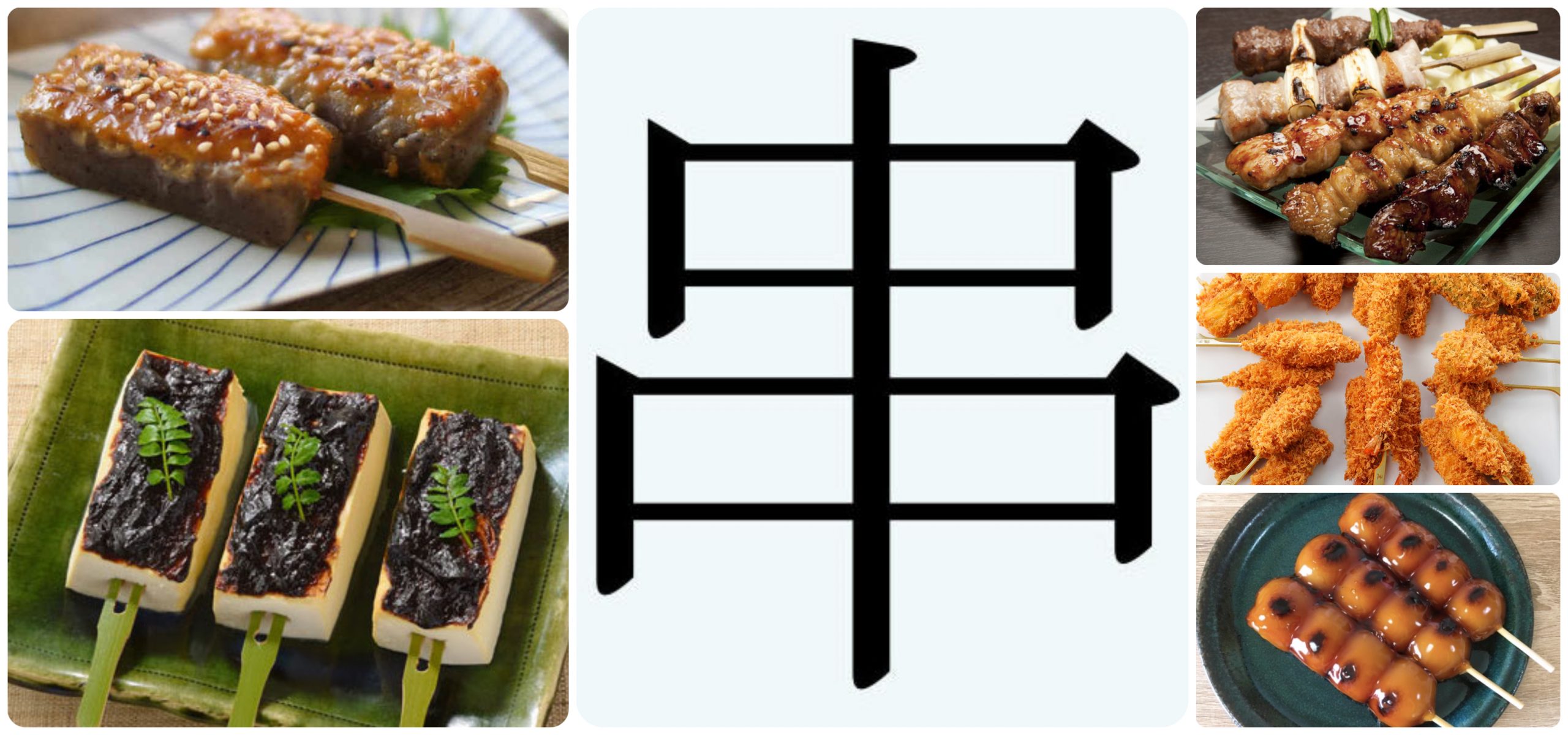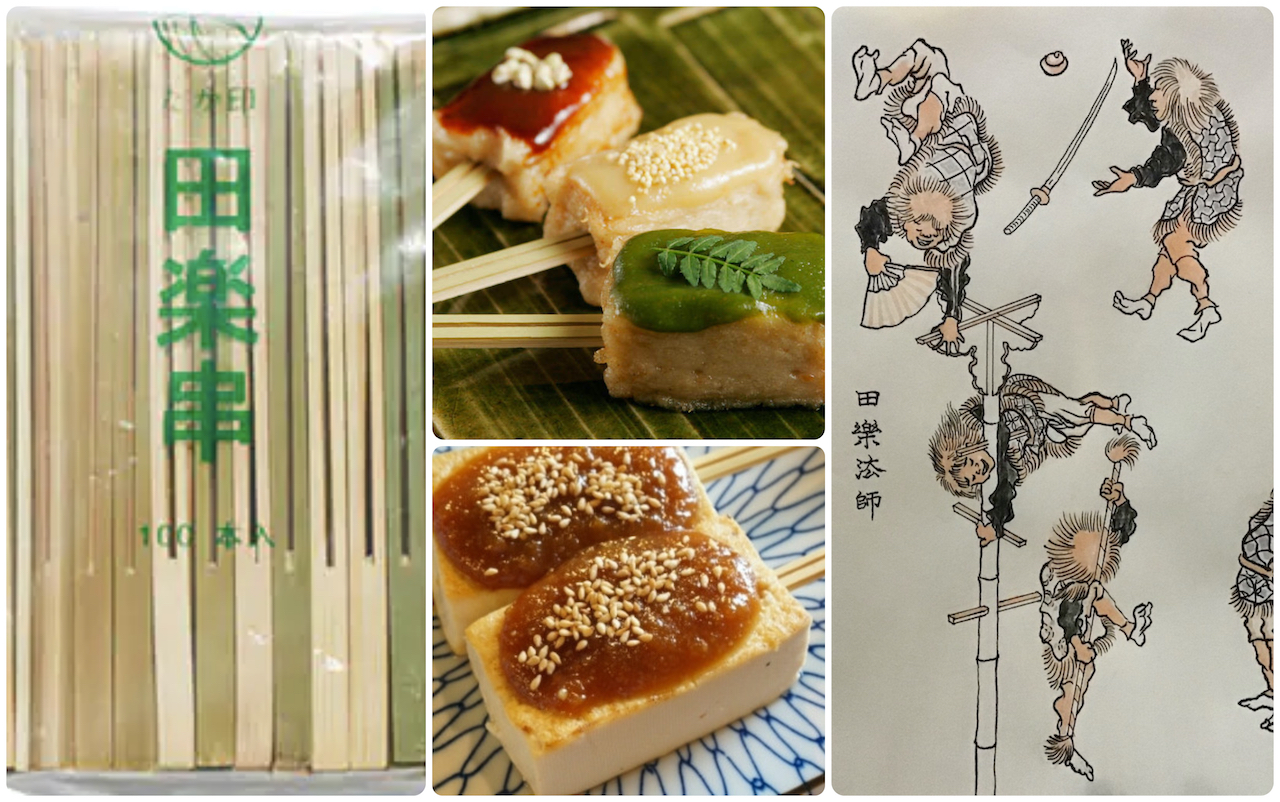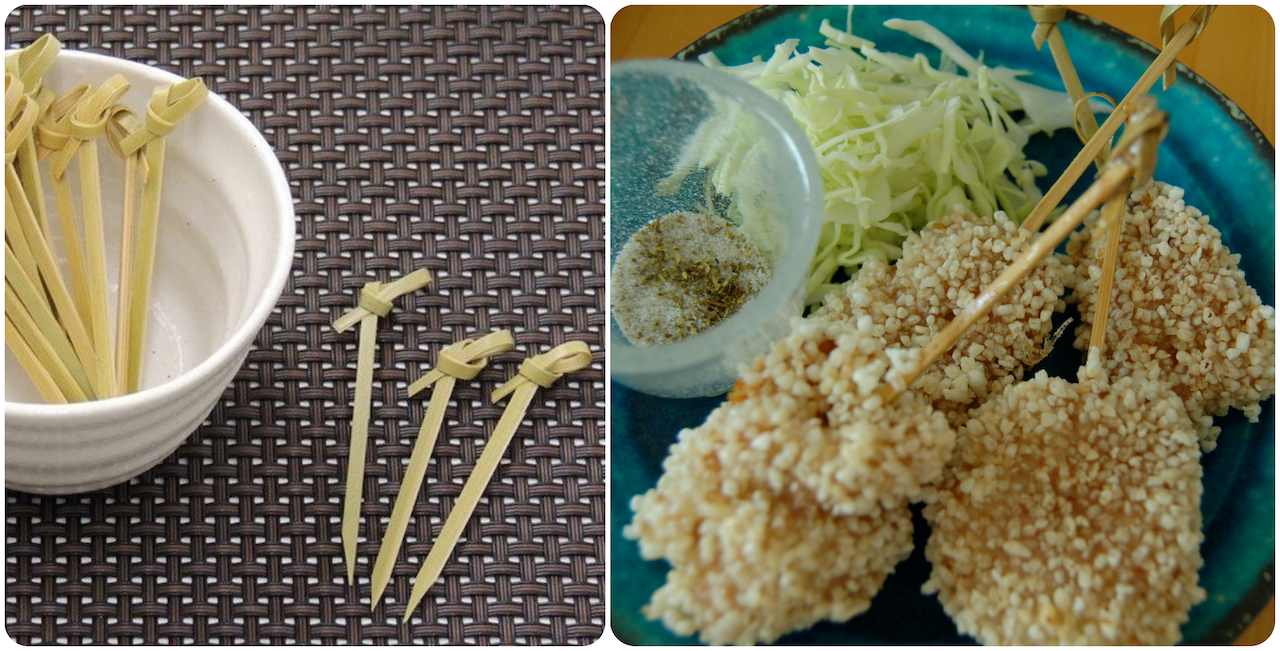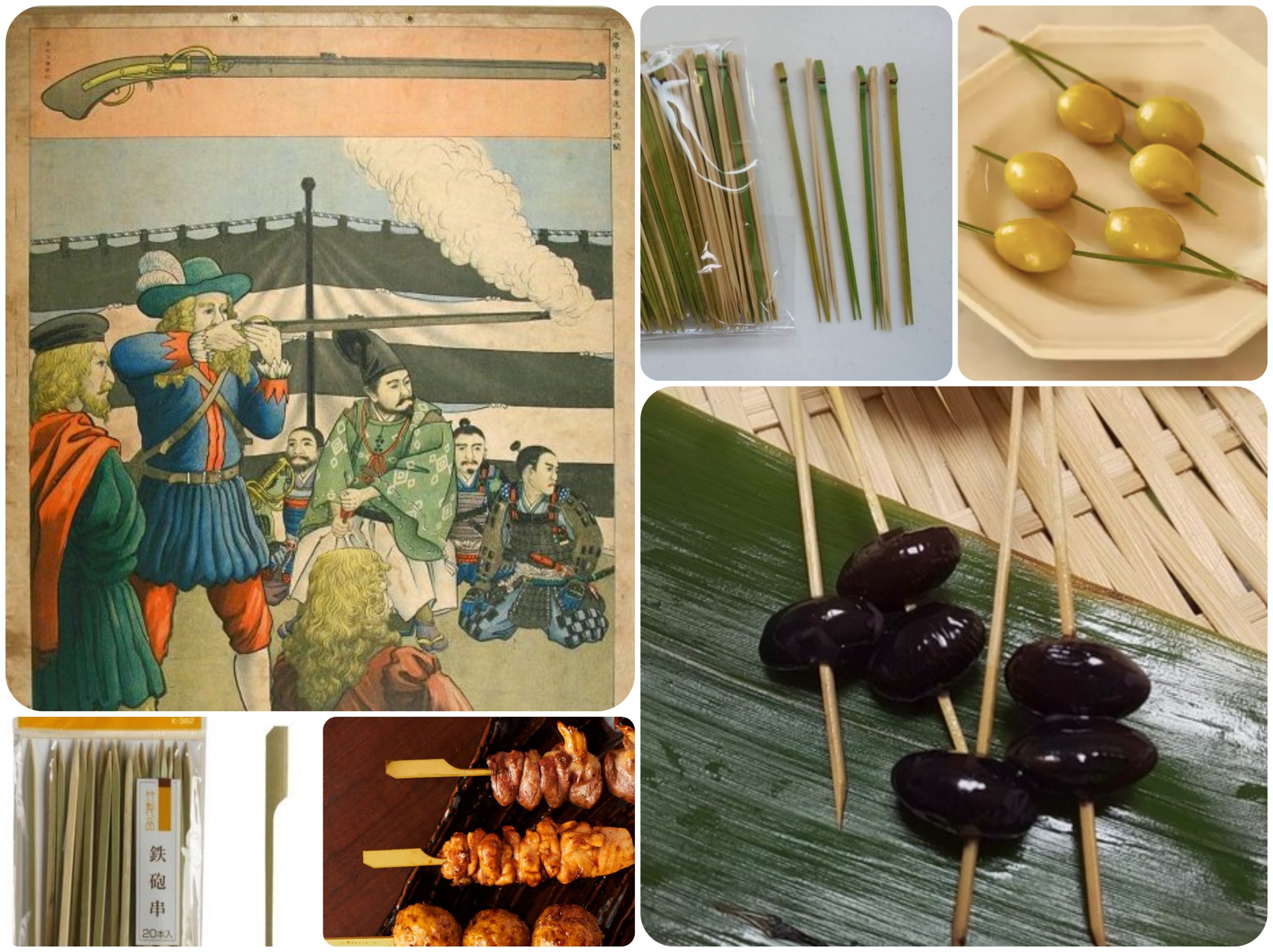
串・KUSHI
Skewers Galore
Because spearing or threading food on skewers makes cooking over a fire easier and more efficient it’s not surprising to find some sort of skewered food in nearly every food culture. There is (Brazil’s) churrasco, (Spain’s) pinchos, (Turkey’s) kebabs, (France’s) brochette, (Indonesia’s) satay, (Greece’s) souvlaki and (Japan’s) yakitori to name just a few.
Japan’s repertoire of skewered foods is extensive… and led to the development of several distinctive shapes and types of skewers.

Dengaku Kushi 田楽串
In 1782 “Tōfu Hyaku Chin” (100 Delicacies Made with Tōfu) was published in Edo (the former name for Tokyo) and became a bestseller among the literati and merchants there. Although the recipes themselves were neither new nor original, the idea of compiling so many dishes made from tōfu into a single volume was revolutionary. Of the 100 recipes, a dozen of them were DENGAKU preparations – tōfu slathered with flavored miso paste before broiling.
The word dengaku refers to the sticks on which the tōfu is skewered – in appearance they resemble the stilts on which dancers balanced as they performed an ancient rice-planting ritual.
In gastronomic circles today, however, dengaku usually refers to the sweet-and-salty miso paste that is spread on tōfu, ofu (blocks of wheat gluten), vegetables and/or seafood. Tōfu dengaku is as appealing a dish now, as it was hundreds of years ago.
Download a recipe for Black Sesame Miso-Slathered Tōfu.

Musubi Kushi 結び串
The cute curlicues on these bamboo skewers are formed by knotting or tieing the non-pointed end. The word musubi is used to describe linking, connecting, and gathering in many contexts, especially auspicious ones. Using musubi kushi to present food adds another dimension to the meal.
Download a recipe for Crunchy Kushi Agé

Teppō Kushi 鉄砲串 ・Matsuba Kushi 松葉串
The Portuguese introduced firearms to Japan in the 16th century. Skewers that resemble the shape of those early guns are called TEPPŌ KUSHI. The shape is especially suitable for skewering chicken made into yakitori.
Real pine needles and made-from-bamboo MATSUBA KUSHI are used to present sweet black beans at New Years time and ginko nuts in the autumn.
Visit Project KUSHI where you will find instruction and inspiration for making all manner of skewered tidbits. For those who eat a plant-based diet exclusively, I offer lots of suggestions on how to create your own unique vegan or vegetarian kushi cookery.




